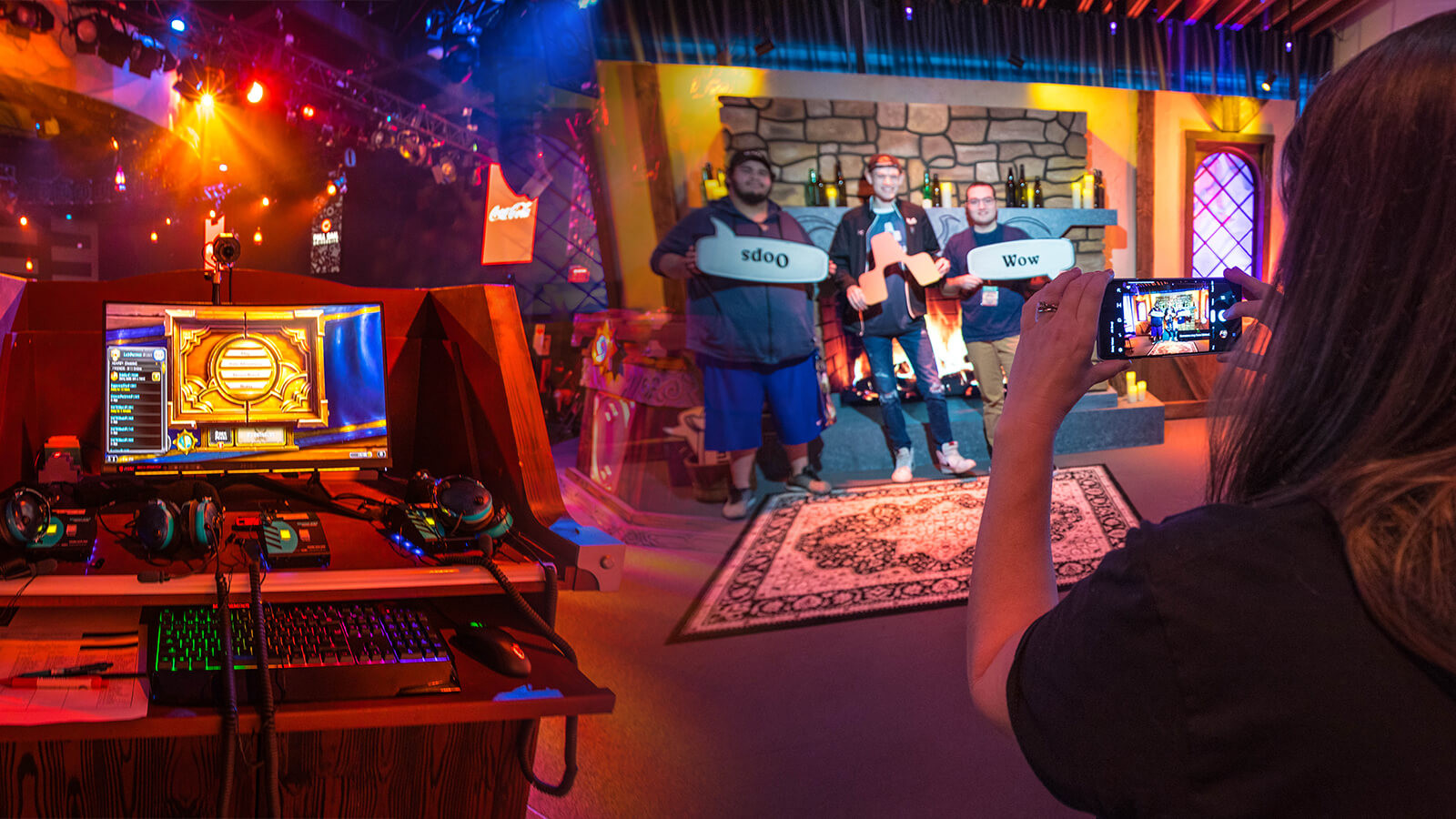News
Published Feb 6, 2020
The 2019 ‘Hearthstone’ Collegiate Championship Recap
With Descent of Dragons live, four teams descended upon Full Sail University to compete for the title of champion.

On December 14, Full Sail University hosted the 2019 Hearthstone Collegiate Championships in the Fortress. Completely transformed to look and feel like the tavern featured in the game, the stage had been set for a thematic, exhilarating set of matches.
With the recent release of Descent of Dragons coming out only two days prior, there were several questions as to how the gameplay, deck lists, and competitors would be affected by the inclusion of new cards like Galakrond and Kronx Dragonhoof, in addition to the new “Invoke” mechanic. Several deck archetypes saw improvements and were fielded by all the teams present. Galakrond Shaman and Highlander Hunter were featured heavily throughout the Championship, including spins on Highlander Mage, Tempo Rogue, and Holy Wrath Paladin.
Over the course of four months, teams from across North America played throughout the season in order to qualify for the regional and championship brackets and get into the finals. The final competitors would be Rochester Institute of Technology (RIT), UC Berkeley (CAL), Simon Frasier University (SFU), and Southern Illinois University – Edwardsville (SIUE).
The Collegiate Championship used the Conquest Format, a best-of-five game type, giving each team the option to use four unique decks and the ability to ban one of their opponent’s. In what seemed to be a universal decision, Galakrond Shaman was banned by almost every team due to its overwhelming power – with the exception of the Championship’s first match, where RIT allowed CAL to field their Galakrond Shaman in the opening game.
Additionally, teams could not win with the same deck twice. Gameplay had to be tight and each team had to coordinate amongst each other to keep track of cards played, discuss strategy, and maintain steady lines of communication before committing to a play.
The first match of the tournament saw CAL and RIT face off against each other. Despite CAL having access to Galakrond Shaman, RIT was able to close out the match with a control-based Holy Wrath Paladin deck that pushed them into the finals.
The second match of the tournament saw SFU face off against SIUE. With Hearthstone Grandmasters Tour player Eddie at the helm of the team, SFU was able to secure a spot in the final match after a close match with their Holy Wrath Paladin against SIUE’s Galakrond Rogue.
The grand finals were an explosive ordeal of back and forth matches that saw close calls and even closer finishes. RIT and SFU were matching each other card for card and game for game. Matches were often decided with the usage of key legendary cards like Dragonqueen Alexstrasza, Zephyrs the Great, and Shirvallah, the Tiger generating lethal damage, controlling the board, and providing options to gain advantages on key turns.
The final game would be a mirror match between RIT and SFU’s Holy Wrath Paladin decks. Near the final turns of the game, both players had run out of cards, and were desperate to hit their respective Shirvallah combos. With RIT coming in ahead, they were ultimately able to win the championships after nearly losing with a 0-2 record against SFU.
At the conclusion of the tournament, RIT’s players (Eggowaffle, Icoicy, and Smile) were awarded the title of TESPA Hearthstone Collegiate Fall Champions. "We never really knew that we'd come this far," says Eggowaffle. "Playing as a team, playing with everyone else, practicing with everyone else, everyone at home supporting us just feels really good that we showed them that we could do it, that we could go all the way."
Thanks to our sponsors















